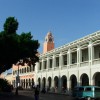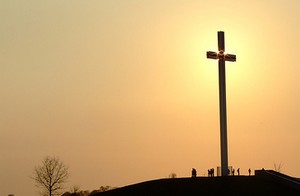Many thanks to all who were instrumental in prayer during this trying week. Kelly and I were both down dealing with different sicknesses. Hers was an amoebic infection while I was flat on my back for many days as the doctors tried to determine which antibiotic was going to vanquish my dreaded nemesis, the sinus infection. We are both back on our feet again, the blessed recipients of the care and concern, (thanks Kazims), prayers (thanks especially to Carlos who called and prayed with me), and the understanding of 3 wonderful kids (thanks Rebekah, Joseph and Jonathan.)
During my convalescence, I had little to do save read, and read I did, voluminously. My most profound experience came through the words of Philip Yancey in his book “The Jesus I Never Knew.” It is an excellent work on the Jesus that came near, analyzing his personhood, teachings, miracles, and legacy.
A concept in this book spoke to me as I lay there waiting for my body to respond to treatment, waiting for my healing to come. There were moments of despair, frustration and to be sure pain. I was “in-between.” I had been given what I had needed in order to heal. I had the promise of health from the doctor, I just needed to wait. However, as the moments stretched to hours and the hours to days, the waiting was difficult, tedious, dreadful. I was tired of the delay.
We who hope for redemption are in this state of “in betweenness,” the time between Christ’s ascension and His return. Yancey says it is a sort of Saturday. He states that both the other two days, Good Friday and Easter Sunday have names on the Church calendar. But we who live in this time live on Saturday, the day with no name, the time between the promise and the fulfillment, and to be sure we fret, and become frustrated, and we despair. All around us are the signs of the decay of this world–sickness, corruption, poverty. Even our own bodies remind us that, despite our struggle to overcome, we’re made of the stuff of this earth. Yancey explains:
What the disciples experience in a small scale–three days in grief over a man who died on the cross–we now live on a cosmic scale. Human history grinds on, between the time of promise and fulfillment. Can we trust that God can make something holy out of a world that includes Bosnia and Rwanda, and inner-city ghettos and jammed prisons in the richest nation on earth?
And I ask myself: can I trust that God can make something holy out of my setbacks, my failures, and even my infections?
It’s Saturday on planet earth; will Sunday ever come?
Yet in the same way that three days of grief came to an end that Easter morning now over 2000 years ago. Our promise too will be realized because:
Easter opened up a crack in the universe winding down toward entropy and decay, sealing the promise that someday God will enlarge the miracle of Easter to a cosmic scale.
My waiting of sickness is over. My body has responded, I’m recovering, and thankfully, so is Kelly. Still, in the meantime we wait; we wait for all to be set in order, we wait for our final redemption while we hold out hope to a world increasingly reluctant to respond. But we know, despite what Paul calls our light and momentary troubles, our waiting is not in vain. Our King will come!
Photo by jaqian













